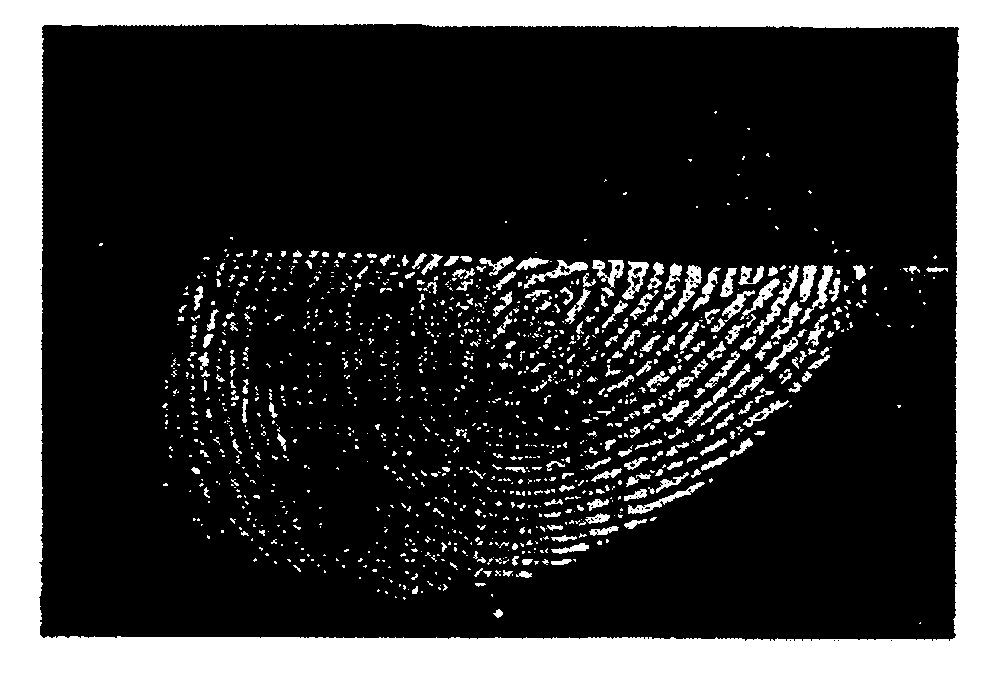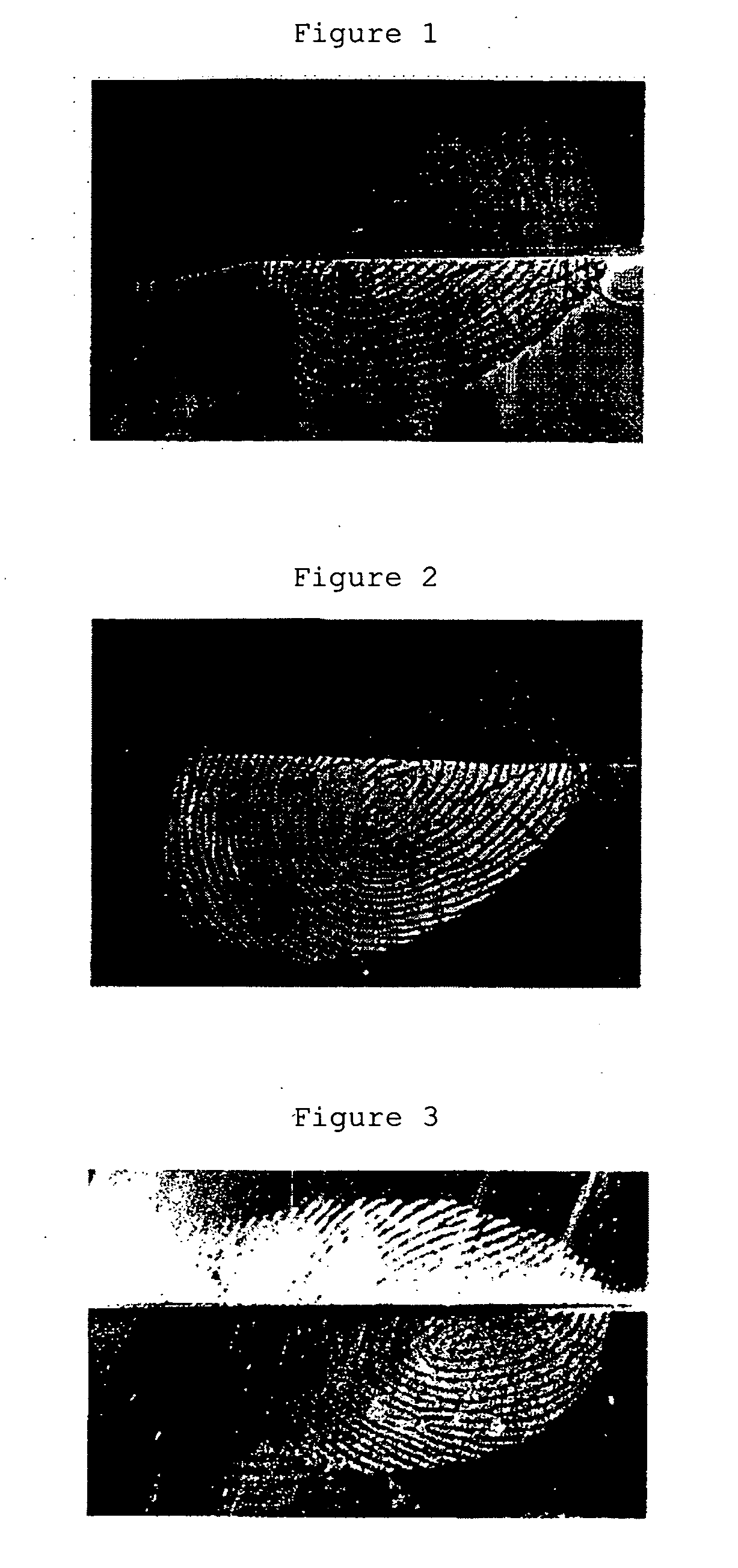Polymer for detecting fingerprint, method of producing the same, composition for detecting fingerprint and method of detecting fingerprint using the same
- Summary
- Abstract
- Description
- Claims
- Application Information
AI Technical Summary
Benefits of technology
Problems solved by technology
Method used
Image
Examples
example
[0043]Hereinafter, the present invention will be described in more detail by way of Examples and Comparative Examples, however, the present invention is not limited to these examples.
examples 1-12
, Comparative Examples 1-4
[0044]0.2 g of a reacted polymer or powder mixture obtained using ethyl-2-cyanoacrylate (ARONALPHA 201 manufactured by TOAGOSEI CO., LTD.) and a fluorescent colorant shown in Table 1 was vaporized by heating (150-240° C.×20 minutes) in a glass vessel (280×280×300 mm), and was allowed to adhere to a latent fingerprint on an aluminum foil attached to the wall of the vessel, in order to detect a fluorescent fingerprint and evaluate restorability. Also, thermogravimetric analysis (TGA) was performed, in order to determine a temperature at which vaporization was initiated according to tangent method using the TGA chart.
(Method for Producing Reacted Polymers)
[0045]To a 5 mass % solution in acetone of a fluorescent colorant shown in Table 1, a 10 mass % solution in acetone of ethyl-2-cyanoacrylate was added in a ratio shown in Table 1. The mixture was allowed to react at 25° C. for 24 hours, and then acetone was removed. The reacted polymer thus obtained was used ...
PUM
| Property | Measurement | Unit |
|---|---|---|
| Fluorescence | aaaaa | aaaaa |
Abstract
Description
Claims
Application Information
 Login to View More
Login to View More - R&D
- Intellectual Property
- Life Sciences
- Materials
- Tech Scout
- Unparalleled Data Quality
- Higher Quality Content
- 60% Fewer Hallucinations
Browse by: Latest US Patents, China's latest patents, Technical Efficacy Thesaurus, Application Domain, Technology Topic, Popular Technical Reports.
© 2025 PatSnap. All rights reserved.Legal|Privacy policy|Modern Slavery Act Transparency Statement|Sitemap|About US| Contact US: help@patsnap.com



